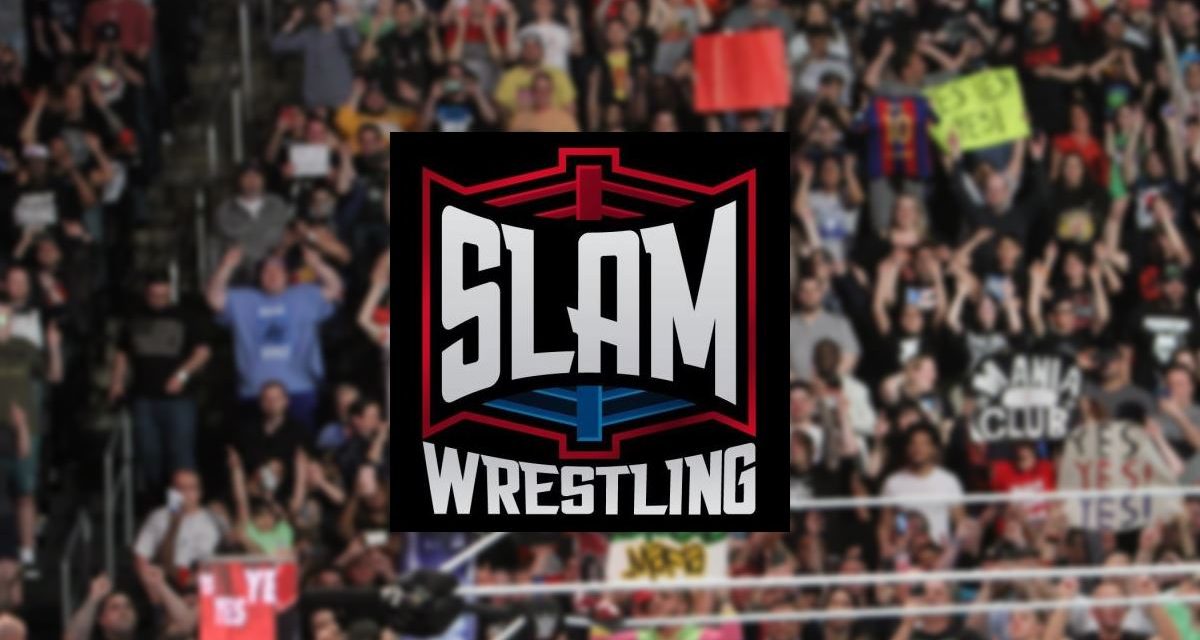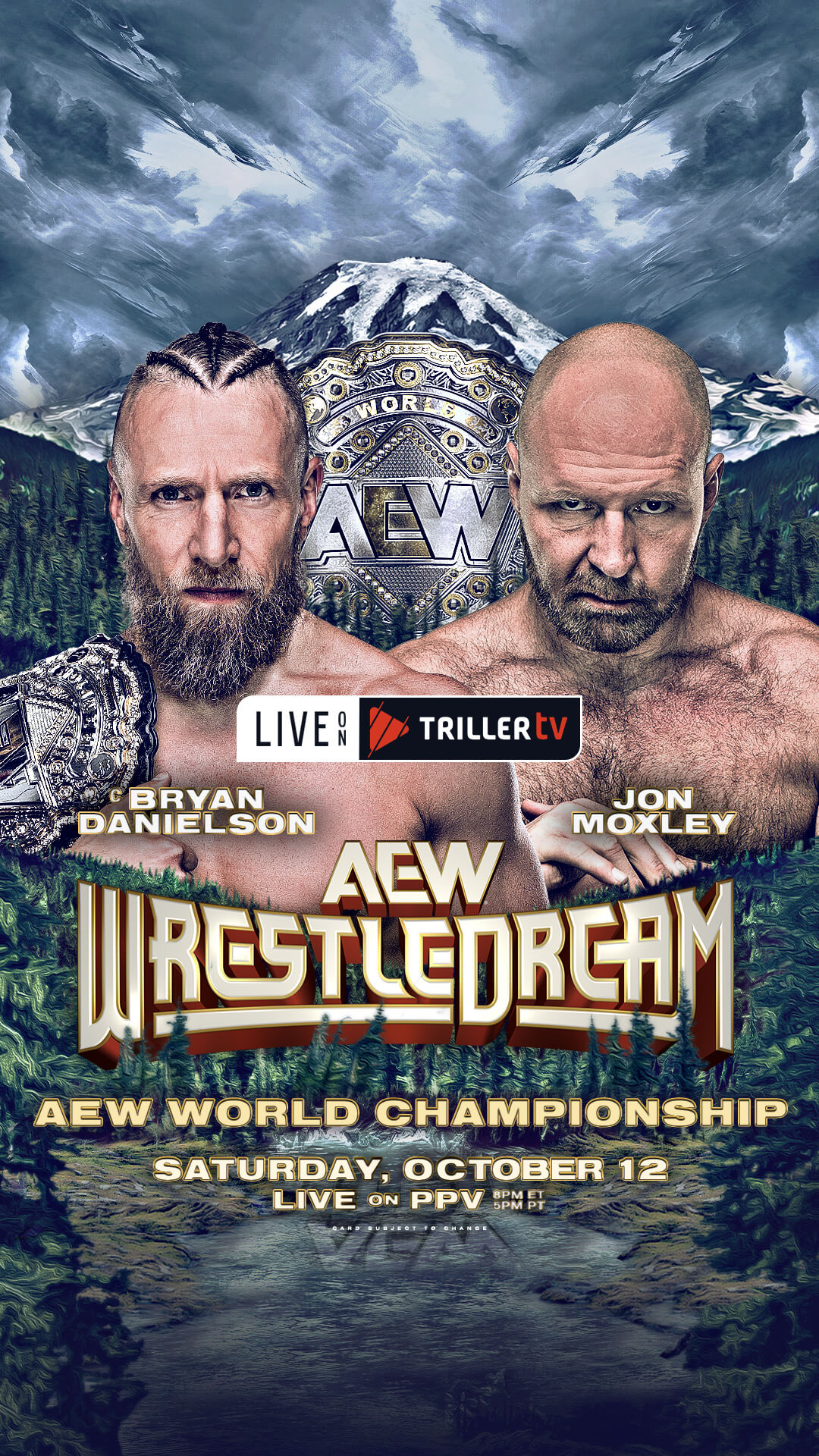Does size really matter? Not to Shawn Daivari, who was able to stand tall in a land of giants, and prove that true talent conquers all.
“My first day in OVW, I thought I would never get out of there,” Daivari said. “I saw all these ridiculously gigantic guys like Bobby Lashley, Matt Morgan, Jon Heidenreich and Chris Masters, and I was like, ‘There’s no way I’m ever getting out of here. Lightning would have to strike me twice, before I beat these guys to the road.'”
Just to backtrack a little, Daivari’s journey actually began during his teenage years, when it came time to choose a career. And that decision could not have been easier.
“In the ninth grade, we had all these guidance counselors, who would try to place you in college,” he said. “They tried to get a sense of whatever it is you wanted to do for a living. I really didn’t consider any other option. I didn’t want to go to college or join the workforce. I just wanted to wrestle.”
The next logical step for Daivari was figuring out how he was going to accomplish this goal.
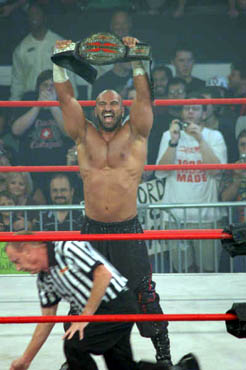
Shawn Daivari, as Sheik Abdul Bashir, is the TNA X Division champion in Oshawa, Ontario, in September 2008. Photo by Mike Mastrandrea
“I originally was planning on going to Atlanta, to train at the WCW Power Plant after high school. But then I discovered that there was actually a school in Minnesota that was opened by Eddie Sharkey, who competed in circus carnivals and later the AWA, and I started to train while in 10th grade,” Daivari said. “We started to learn how to take bumps, and we were using this really s—– ring, that was rusted to f—. It was the original AWA 14-foot house show ring; never rebuilt; never lubed or oiled. But we would take bump after bump, and I would meet people in the industry who didn’t know how to bump properly. When I was in All Japan, their World Champion was practicing bumps before the show started, ’cause he was taking them s—– and cockeyed, and the boss didn’t like ’em.”
There’s a common saying in the corporate world that ‘it’s not about what you know, but who you know.’ In Daivari’s case, it was more a matter of who he was willing to listen to. Being in the business for so long, he was able to meet some very helpful people. It’s the ultimate dream of most wrestlers to be able to work for the number one wrestling company in the world, which today, is the WWE. And Daivari’s dream came true sooner than he could have ever imagined, thanks to those helpful hands.
“I started working dark matches for the WWE around 2003. Tom Pritchard would book a few indy guys for dark matches. And by August 2004, I had about 12 or 13 matches,” Daivari said. “Ken Kennedy gave me the contact for Kevin Kelly, so I put a tape together, to send to Kevin at the WWE. I was in the middle of a social studies class, and all of a sudden, my phone rings, and it shows up as an unavailable number. I thought it was weird, but then I guessed maybe it was the WWE office calling.”
After receiving the call of calls, Daivari was sent to one of the WWE’s developmental territories, Ohio Valley Wrestling. There he would learn to work the WWE style of wrestling and also perfect everything that he was taught previously. He didn’t expect to be out of OVW so soon, but he was fortunate enough to be in the right place, at the right time.
“Tommy Dreamer was the man who would book us on the house shows, and they ended up hiring me, because they needed someone to run with the Muhammad Hassan character,” Daivari said.
Daivari and Hassan (Marc Copani) were playing the roles of Arab Americans who were frustrated, because their lives were never the same after the events of 9/11. Some may call those characters stereotypes, and Daivari agrees. But he says he never had a problem playing that character.
“I was playing the anti-American character on the independents, before I got to the WWE. So I wasn’t too concerned with how people would react to it,” Daivari said.
Now 27, Daivari has already accomplished so much in the wrestling business. But perhaps the night that stands out the most is April 3, 2005. It was Wrestlemania 21, and on that night, Daivari was involved in one of the more memorable ‘Mania moments, as he stood in the ring with the man who made Wrestlemania famous, Hulk Hogan.
“I’ve probably watched my Wrestlemania bit about four times in my life. And it’s only the last time I saw it, that I really have a chance to appreciate it. I thought the angle we did at Wrestlemania was cool at the time, but I didn’t really get a chance to enjoy it as much as one would like to, because the machine never stops,” he said. “I really couldn’t be hung up on how awesome the Wrestlemania thing was, because then we had Raw the next night, and then the annual post-Wrestlemania European trip, and then the pay per view.”
The follow-up to the Wrestlemania angle may have been the biggest match of Daivari’s career. It was himself and Muhammad Hassan in a tag team match, against Hulk Hogan, and one of Daivari’s childhood favourites, Shawn Michaels.
Daivari and Hassan were then moved over to the Smackdown brand during the annual WWE draft. But things took a turn for the worse. Hassan was feuding with The Undertaker at the time, and they shot a big angle at the Smackdown tapings, leading into the pay per view, where Hassan orchestrated a terrorist attack on The Undertaker. Unfortunately, Hassan became a victim of bad timing, as the infamous London bombing happened the morning that particular episode aired. Both Hassan and Daivari were sent home after the pay per view.
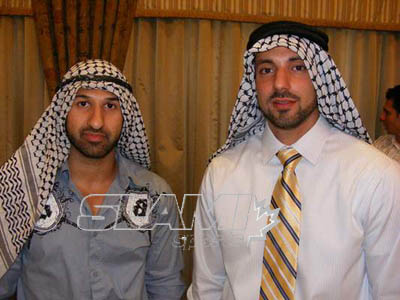
Davairi and Muhammad Hassan at K&S Wrestlefest VI Spring Spectacular in April 2010, in Carteret, NJ. Photo by Michael Coons
“The terrorist angle that they did with Muhammad really sucked for me personally. We became a product of circumstance, out of everybody’s control. It was just poor timing,” Daivari said. “The bombing actually happened the morning Smackdown aired, but the show was filmed on Tuesday. Unfortunately, every newspaper picked it up as if it was a live program, which created this angle due to the London bombings. Nobody could have predicted this. I wasn’t too concerned, because they continued to pay me weekly, while I sat at home, and legally, they weren’t contractually obligated to. That kept me positive that maybe they wanted me to hang around. When Paul Heyman took over OVW, they asked me if I’d go down there for a week, and see if anything clicks with Paul. I said sure. They made the same offer to Muhammad, but he said no. He was unhappy with how he was treated. He made it very obvious to everyone; he got the short end of the stick. I completely understood his frustration. And now that I’ve been around the business a little longer, I’m a little less naïve, and think he has a right that if he did anything else in the company, other than Muhammad Hassan, it wouldn’t have had the same traction as we had thus far.”
Daivari was eventually brought back to the main roster as a full-time manager. He was originally paired with Kurt Angle, which he enjoyed very much.
“When I started managing Kurt, Stephanie [McMahon] put me with him, ’cause the audience was cheering Kurt the heel, and booing John Cena the babyface,” Daivari said. “I was more of a pussy, little brother, who does whatever he wants, cause he knows his big brother would handle any problems.”
Daivari wasn’t managing Angle for very long. Smackdown’s World Champion Batista had suffered an injury, which required surgery, and he would be on the shelf for the majority of the year. The WWE then placed Angle in Batista’s position, as the top babyface on Smackdown, while Daivari began managing Mark Henry, against the likes of Angle and The Undertaker. Daivari later managed The Great Khali, up until the end of his contract.
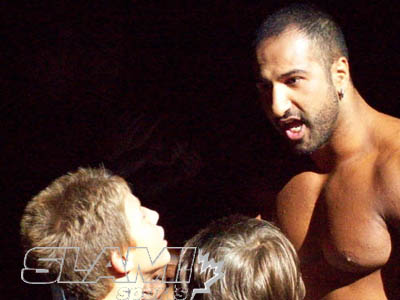
Sheik Abdul Bashir yells at some fans at the TNA house show in London, Ontario in September 2008. Photo by Nikki Riches, DaveBatista.com
“When you’re in the business, you don’t realize how normal eyes would see us and what we do; the talent, the girls, The Great Khali. We would walk into Denny’s and we would think of it as having lunch with our friends. But average people would wonder what a 7-foot foreigner was doing, eating lunch at Denny’s in Oskaloosa,” he said. “My partners in wrestling have always been like a prison sentence with a cell mate, but luckily for me, always in a good way. You spend about a year together with these guys, and I actually spent more time with them than my own wife at the time.”
Knowing that nothing lasts forever, Daivari always managed to keep his options open. He later signed with TNA, where he was able to reintroduce his anti-American character. This time, he was known as Sheik Abdul Bashir.
“Coming to TNA, I kind of felt like I had something to prove to both the TNA talent and the TNA office. There were a few guys that knew me, but a few that didn’t. They had a handful of new faces, and everyone would kind of look at you and go, ‘Here we go again; another guy from WWE taking up spots and money, only to stink the joint up and be gone in three months,'” Daivari said.
One of the biggest challenges in the wrestling business is the issue of weight gain or loss. Certainly performers like Rey Mysterio have opened a lot of doors for the smaller wrestlers. But there is still an unwritten code about what a wrestler is supposed to look like. Daivari currently stands 5’10” and weighs 220 pounds, which is the ideal size of a modern wrestler. But there was a time when it was a lot tougher to get by.
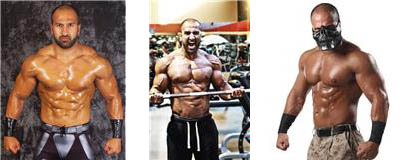
“One time, Barry Windham came up to me at Raw with the production notes for the show, and goes, ‘Tell Daivari to lose weight.’ It was kind of heartbreaking, cause I was dieting and training my ass off in the gym to get bigger, and they say to me, ‘You’re a cruiserweight wrestler who doesn’t look like a cruiserweight.’ I may have been bigger than the other cruiserweights, but I was still one of the smallest guys in the company. I tried to prevent just being limited to wrestling cruiserweights,” Daivari said. “I dodged that a bit in TNA. I had a decent program with Rhino, which people thought looked convincing. I was involved in the Main Event Mafia storyline, when we (World Elite) were brawling with those guys, and office and other wrestlers said it looked believable and convincing. But most of the time, I was just placed in all these clusterf— matches with so many X-Division guys, that I just became another guy in there. Sometimes you feel like new office personnel don’t even know your first name.”
Daivari was also privileged enough to be involved in one of TNA’s big side projects, the All Wheels Wrestling program.
“I was really excited when [Jeff] Jarrett called me about All Wheels Wrestling. We taped a pilot for it, and when it came to life, everyone from production to office to talent really lit up to it. It was this really cool concept where everything was based on a point system, kind of like racing,” Daivari said. “The Bound for Glory Series I feel tried to copy or replicate it, but with the Bound for Glory Series, there really was no rhyme or reason to it, because some guys would have 100 matches and a ton of points, and others would be having three matches and had no points. There was no set schedule or time table so in theory wrestlers couldn’t strategize and the audience couldn’t track, follow or play along. With All Wheels Wrestling, it’ll be more clear cut, and you’d know exactly what points would be given on what episode, to what players with a definite starting point and ending point. I think this is really gonna open up a lot of doors for audiences to play at home in a fantasy type system similar to fantasy football or baseball.”
After leaving TNA in December 2009, Daivari has been wrestling frequently on the independent circuit, including Ring of Honor. He recently signed on to work with Jeff Katz’ Wrestling Revolution Project, which looks to be very innovative, as far as the future direction of the business is concerned.
“Jeff Katz is a guy who worked for New Line Cinema, and has produced movies for them. But even though he’s in Hollywood, his first love is wrestling. It was Christian who actually introduced us one night, when we were hanging out in Las Vegas. [Jeff] called me up and asked me if I was tied up with anything contractually, and said he was working on a project that would be the future of pro wrestling,” Daivari said. “The Wrestling Revolution Project is available OnDemand, and there will be a specific number of episodes per season. At the end of the season, they’ll have a chance to tie up programs, angles and stories. And it’ll run with 10-15ish episodes per season, like a regular TV show. They already know where all the angles and characters are headed, and it won’t drag along for weeks and weeks, or make the viewers sit through weeks and weeks of s—, until they find something that clicks.”
For somebody who hasn’t even made it to 30 yet, Daivari has a lot to be proud of. And one has to think that he can still only go up from here.
